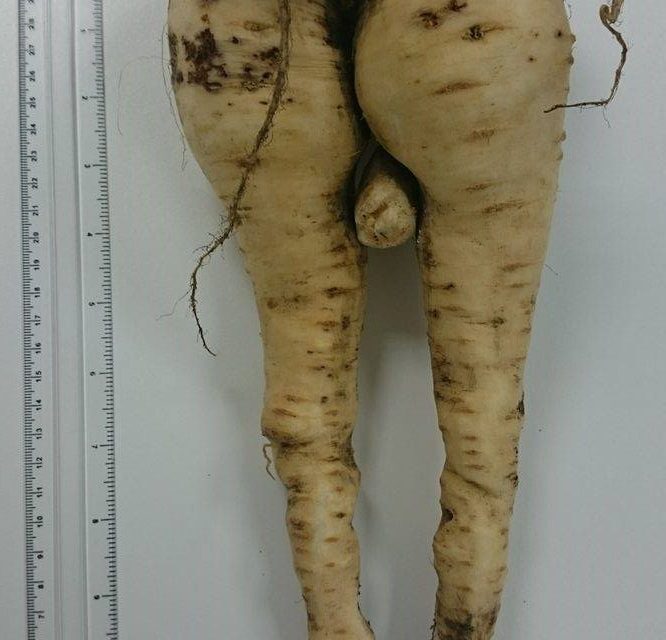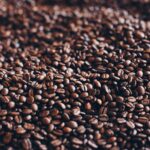Since it’s now time to plant your parsnip seeds in readiness for harvest after the first frost of next winter(!), it seems like a good opportunity to share with you a monstrous one previously grown by one of the Food Databanks team. Which got us thinking. if we were stuck on an allotment with nothing to eat than this comedy whopper, what nutrients would we get from it and if we sold it on, could we make a nutrition claim on it?

Here is what we found:
The entire parsnip:
We have assumed that since we are supposed to be eating this on the allotment, we have not peeled or cooked it. However, we also assume we have found ways of washing it so we have not included nutrients present in all that soil you can see, or the worm you can’t. The data came from our UK Composition of Foods dataset.
Weight 1041g (length 34cm*)
Kcal: 763
Protein: 19g
Carbohydrate: 122g
of which is sugars: 57g
Fibre: 49g
Fat: 11g
Salt: 0.26g
*not an essential for calculating nutritional information
Nutrition Requirements
Reference intakes (RI) of nutrients, are the guideline maximum daily amounts needed in order to maintain a healthy diet (based on an average female adult). One of us eating all of our parsnip would reach the following RI: energy: 38%, protein: 38%, carbohydrate: 47%, sugars: 64%, fat: 6%, Salt: 4%.
The SACN report recommends we eat 30g fibre per day, at 46g our parsnip gives us half as much again!
Reference nutrient intakes (RNI) for vitamins and minerals are the amount of a nutrient that is enough to ensure that the needs of nearly all of a group are being met. Here are a few highlights from eating the parsnip: RNI 221% vitamin C, 53% Calcium, 87% vitamin E, 453% folates (vitamin B5), 260% manganese
So, that’s RI and RNI covered, however, our parsnip can not help the RNLI, it’s not buoyant or brave enough.
Nutrition claims
The regulations for nutrition claims, would allow us to use the following claims if we decided to label our parsnip and sell it rather than eat it: Low fat (where the product contains no more than 3 g of fat per 100 g), very low salt (where the product contains no more than 0.04 g of sodium, or the equivalent value for salt, per 100 g), source of fibre (where the product contains at least 3 g of fibre per 100 g or at least 1.5 g of fibre per 100 kcal), source of potassium, thiamin (vitamin B1), folic acid and vitamin C (where the product contains at least a significant amount as defined in the Annex to Directive 90/496/EEC or an amount provided for by derogations granted according to Article 6 of Regulation (EC) No 1925/2006 of the European Parliament and of the Council of 20 December 2006 on the addition of vitamins and minerals and of certain other substances to foods…don’t you just love directives and regulations?!)
Good luck with your planting, may your parsnips be as bountiful, beautiful and healthy as ours.










